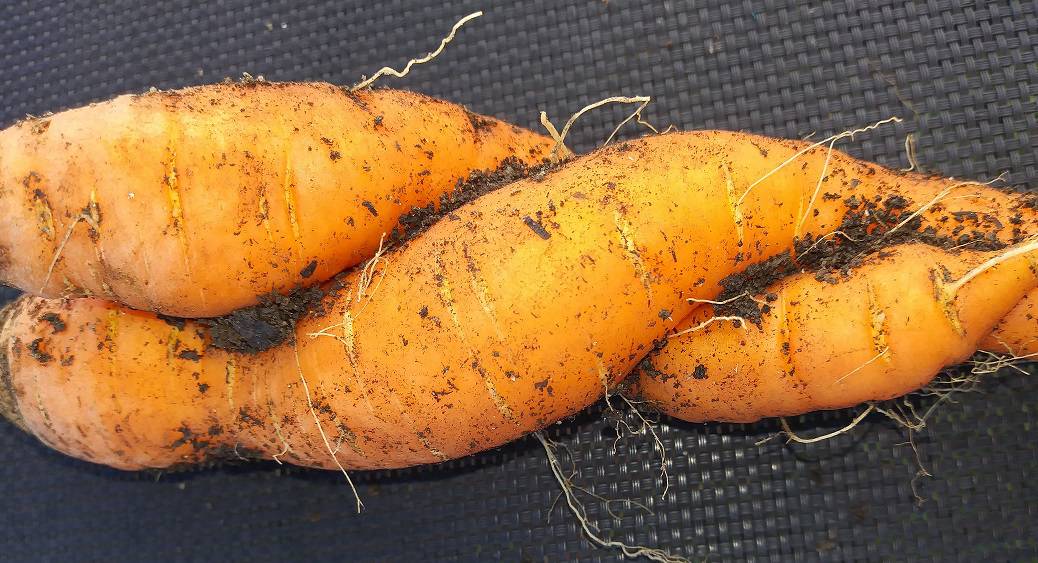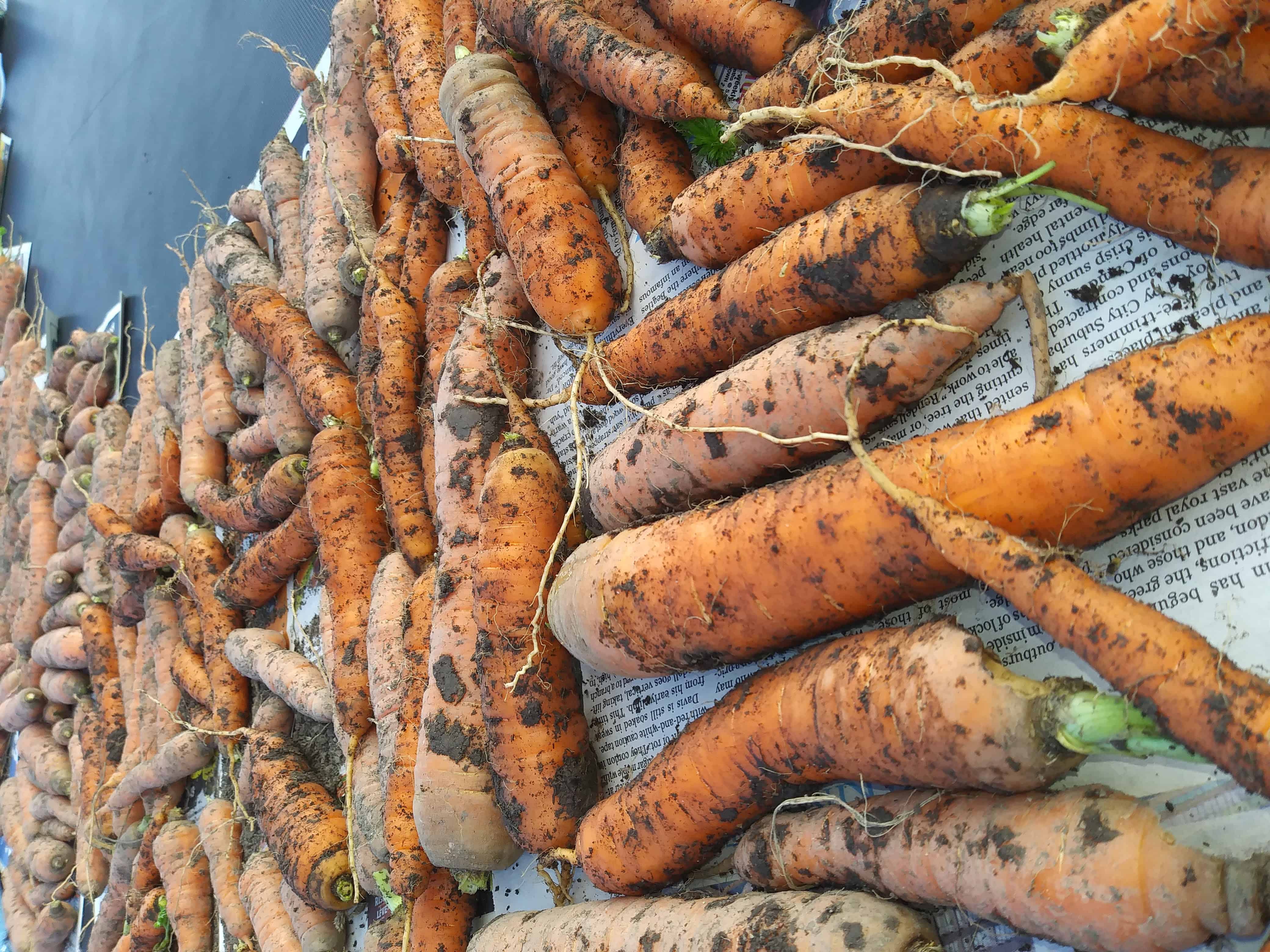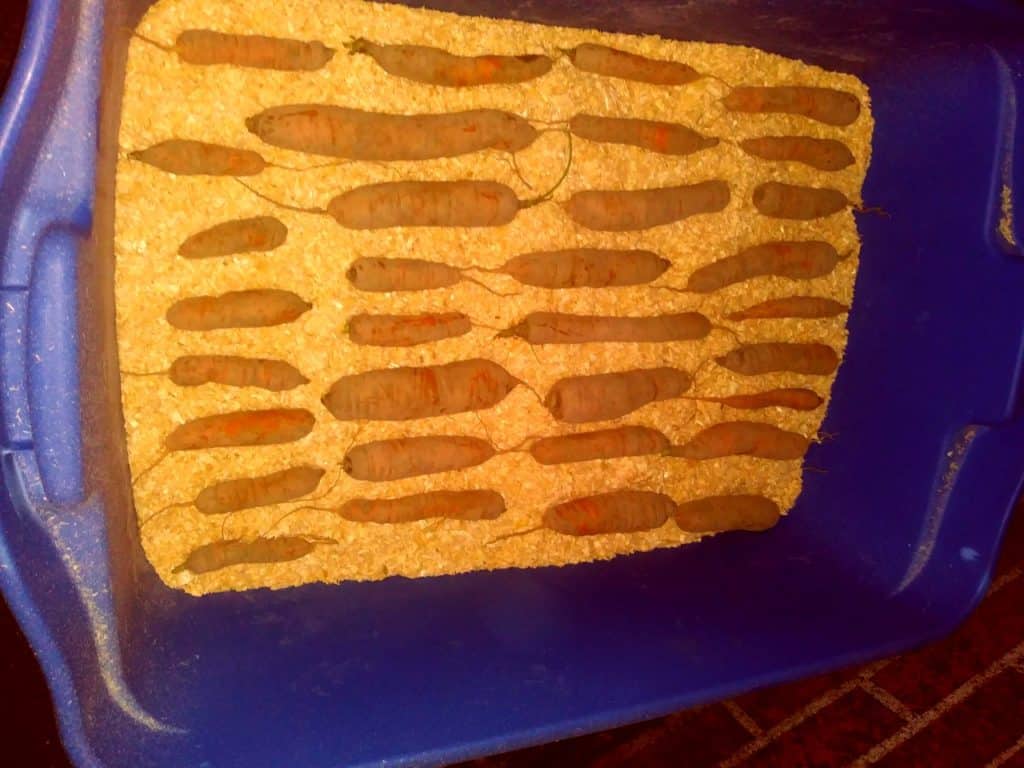How to Store Vegetables Long Term for Only $5

There are many options available to store vegetables long-term. You can use a basement or cellar, canning, freezing, or packing vegetables in shavings and storing them in a cold room.
Our gardens produce a lot in the summer, and it’s wonderful! Instead of relying on the grocery store for all our produce in the winter, we have tried a few methods to store vegetables long term over the years.
I do some canning, but don’t really like a vinegar flavour on everything. I’ll make pickles, relish and salsa, but rely on other methods for storing vegetables for the most part. Freezing vegetables is a wonderful option… and I freeze swish chard, spinach, and kale to use in our green smoothies.
The most unusual method I tried was digging a hole in the garden and packing layers of vegetables between straw and covering up the hole. This method worked fine short term, but long term we found the temperature changes caused the vegetables to turn to mush. I’m sure there is a trick I am missing, such as digging a deeper hole or something, but I ended up moving on to other methods.
For vegetables like beets and carrots, this year I tried packing in shavings and storing in a covered porch that is cooler than the rest of my house. Below is the method I followed and the vegetables are doing very well three months later!
Packing Vegetables in Shavings for Long Term Storage
I tried a new method this year and I am very happy with the results. I don’t have a root cellar so I tried this method of packing beets and carrots in large tubs, alternating layers of shavings and it’s working out very well.
Pick vegetables from the garden late in the year and remove the stems. Root vegetables tend to get sweeter and are more enjoyable after the first frost.
Gently remove some of the dirt and lay them out to dry, but no longer than an hour or so. I used our trampoline and placed the vegetables on newspaper. You could use the ground as well, but my free-range chickens would have taken at least one bite out of every vegetable!

Begin with a 2-inch layer of shavings on the bottom of a large plastic tub. Do not wash the vegetables, just start placing them on the shavings.
I used tubs I already had and the shavings cost about $5, so this was not expensive at all. This method was a little time consuming, but completely worth it to ensure we had home-grown goodness all winter long! Finish with a top layer of shavings and put the lid back on.

Storing the Vegetable Bins for Winter
Store the tubs in a cool room or basement and ensure they have some ventilation. Some people drill a few holes in the lid, but I chose to just prop the lid open in one corner with a flat tubberware lid for ventilation.
When you are ready to cook, you simply dust off any shavings, wash, peel, and the vegetables are ready to enjoy!
You may also like Step-by-Step Method for Freezing Broccoli


0 Comments